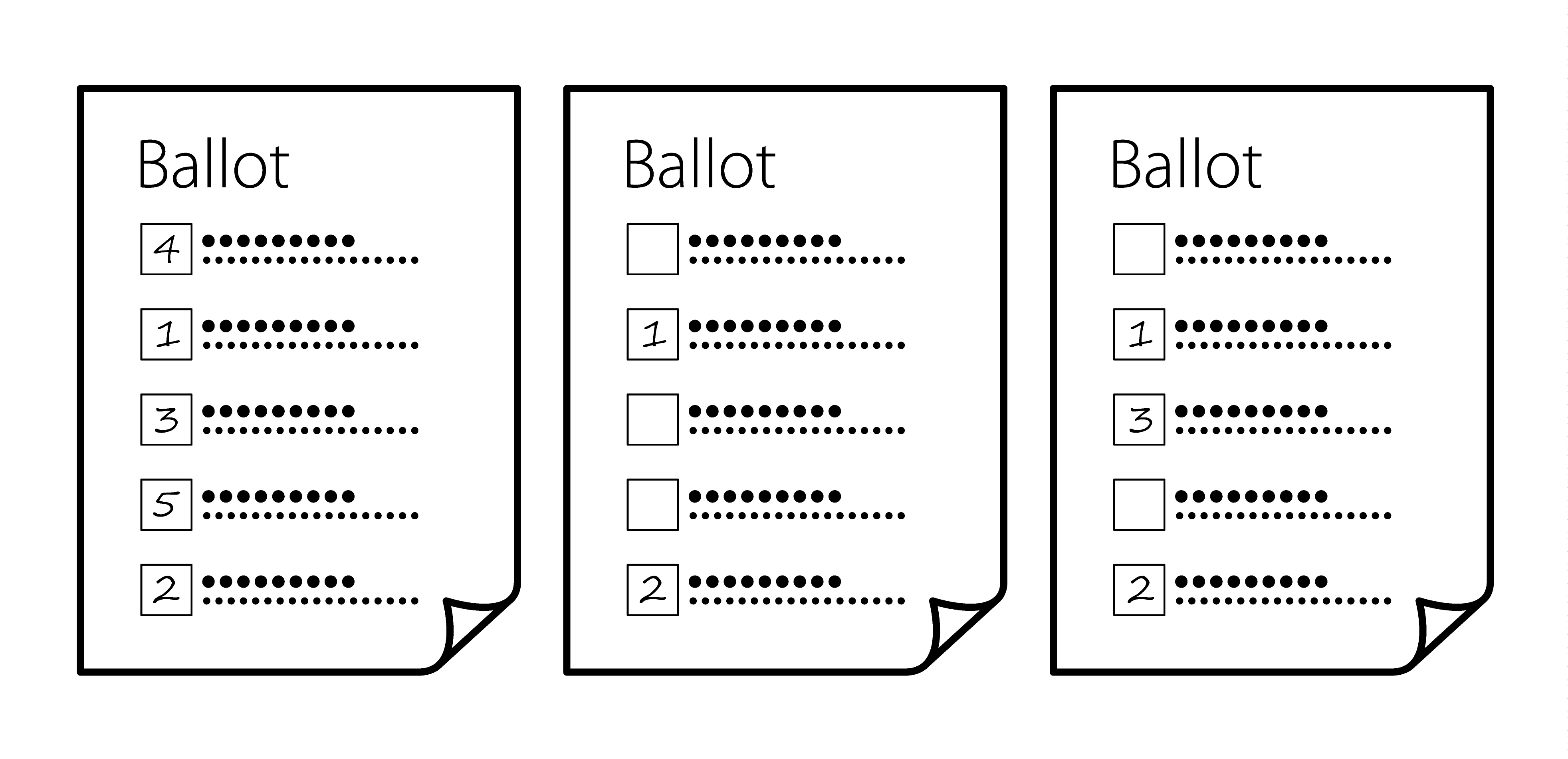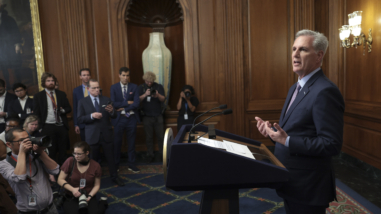Kelly Born: Maine’s ranked choice voting could lead the way to a healthier U.S. democracy

After two years of wrangling, Maine just became the first state in the country to pass and uphold ranked choice voting, which lets voters rank the candidates in order of preference rather than casting a vote for just one. This change to Maine’s electoral system could create more civil campaigns that better represent the preferences of voters—something I hope Americans around the country are considering.
Compared to the United States’ current system of voting for only one candidate, which sets up more adversarial campaign dynamics, ranked choice voting has (at least) four main benefits:
- For voters, it offers more choice. If their first-choice candidate does not win, they might still get their second (instead of their last). Ranked choice voting removes the need for strategic voting, and opens up a potential pathway out of our current gridlock by allowing room for third parties. This also tends to increase voter turnout.
- It produces markedly different campaign dynamics, as candidates have to appeal to voters and factions for whom they may not be the first choice. Candidates are incentivized to be your second choice (as this collaborative campaign ad from the latest elections in Maine illustrates) and not to disparage everyone else on the playing field (and, by proxy, the voters that support them).
- It means less minority rule. Ranked choice voting outcomes reflect the preferences of a majority of citizens (though for some it will be their second or third most preferred candidate who ends up winning the majority of the votes).
- It can save money. The runoff election is imbedded in the process, so there’s no need to run another full election.
Ranked choice voting systems are already used in Australia, as well as parts of Canada, Ireland, the Czech Republic, Hong Kong, and London. In the United States, it is used in San Francisco, Oakland, Minneapolis, and, now, statewide in Maine. And fun fact: it’s also used for the Academy Awards.
Bipartisan support for ranked choice voting in the United States is accelerating. Just before the first Maine vote on ranked choice voting, Larry Diamond, senior fellow at Stanford University’s Hoover Institution, said “Maine voters are about to have their say on an experiment that could change the face of democracy in America — and the world.”
Lee Drutman, senior fellow in the program on political reform at New America and author of a report exploring whether our political institutions can handle our political divisions, called the Maine election “the second most important election of 2018” because of the possibility of implementing ranked choice voting. “A two-party system is inadequate to represent the diversity of public opinion,” he said, given that “the share of voters identifying as independents hit a record high (tie) of 46 percent in December 2017.”
And Reihan Salam, executive editor of National Review, in an article co-authored with FairVote’s executive director Rob Richie, argues that ranked choice voting would “transform politics” and better represent the “tens of millions of voters who defy stereotypes of left and right, and are perfectly positioned to bridge our seemingly unbridgeable political divides.” Salam also asks whether politically neutral redistricting – where much of the democracy reform field has been focused – would “in itself yield significantly more competitive and less polarized politics?” Salam suggests “The answer is no. Regardless of how you slice the map, the vast majority of Americans will live in so-called landslide districts, in which either Republicans or Democrats win by overwhelming margins.” Instead, he suggests that ranked choice voting, ideally paired with multi-winner districts, would, “transform politics.”
In Harvard Business School’s look at Why Competition in the Politics Industry is Failing America, ranked choice voting is featured as one of a handful of key solutions to America’s democratic challenges. Authors Katherine Gehl and Michael Porter say ranked choice voting elects the candidates with the broadest appeal to the highest number of voters. Candidates opposed by a majority of voters, they say, can never win under this system and “no votes are ever ‘wasted.’” In July of 2018, The Economist magazine had a cover story on American democracy’s built-in bias, including a detailed case for ranked choice voting. New York Times columnist David Brooks called ranked choice voting the “one reform to save America.” Even actress Jennifer Lawrence weighed in with a video endorsing the reform in Maine.
So how do we encourage more states to follow Maine’s lead? New Zealand, Italy, and Japan, who all reformed their electoral systems in the 1990s, offer some insights. At a 2014 Stanford conference on electoral reform, participants identified a general template of political reforms. Conference attendee and Stanford research associate Didi Kuo reports on three key features of successful reform:
First, voters and opinion leaders in the democracy field – from political scientists to top editorial authors to key political figures – need to recognize electoral systems as a key driver of poor political outcomes. This is something Americans have struggled to do.
Second, and key for the philanthropic sector, the reform coalition – democracy reform advocates, relevant funders, and other opinion leaders – need to cohere around one or two reforms. Perhaps the growing wave of support from various corners and the momentum in Maine indicates that ranked choice voting can emerge as a central reform pillar.
Finally, there needs to be constant voter education – which many of the below-noted groups are doing – and an emphasis on patience in terms of realizing outcomes.
Maine shows that critical reform can be achieved at the state level, and Maine is already seeing evidence of more civil campaigning, and greater voter choice. The question here is: Can political leaders, democracy experts and advocates, and voters bring the alignment, focus, and patience needed to bring this reform to other states?
*The Hewlett Foundation’s Madison Initiative focuses on strengthening U.S. democracy and its institutions—especially Congress—in a time of political polarization. It is nonpartisan and supports nonprofit organizations across the ideological spectrum who are working to improve election processes to give voters more choices, improve civility and reduce polarization, and better represent the diversity of opinions among constituents.
This includes many organizations cited in this article (links provide more information from our grants database): FairVote (which runs the Ranked Choice Voting Resource Center and RepresentWomen projects), Stanford University’s Center for Democracy, Development, and the Rule of Law, New America Foundation, Campaign Legal Center, Inc., Take Back our Republic, Maine Citizen’s for Clean Elections, and the More Equitable Democracy Project.
Who works on ranked choice voting?
- Campaign Legal Center*: Provides legal support to protect and strengthen the U.S. democratic process, and is exploring “ranked choice voting, and other programs that will promote minority representation and civic engagement generally.”
- FairVote*: Nonpartisan champion of electoral reforms that aim to give voters more choices and a stronger voice in representative democracy, with a primary focus on ranked choice voting. FairVote acts as national advocate and communications hub assisting state and local groups.
- More Equitable Democracy*: Nonprofit advocacy organization working at the intersection of racial equity and democracy reform. Ranked choice voting is a key priority.
- New America Foundation’s Political Reform Program*: Develops new strategies and innovations to “repair the dysfunction of government, restore citizen trust, and rebuild the promise of American democracy” and has endorsed and written about the ways ranked choice voting can improve U.S. democracy.
- Ranked Choice Voting Resource Center*: Provides insights and experiences from former election officials who have had experience implementing ranked choice voting. They inform election officials about how ranked choice voting works and how it can be administered.
- RepresentWomen*: Research and education hub focused on systemic approaches to increase the number of women candidates, with a focus on ranked choice voting.
- Stanford University’s Center for Democracy, Development and the Rule of Law*: Interdisciplinary center for research, policy, and practice on how countries overcome poverty and instability to become prosperous, democratic, and well-governed.
- Take Back Our Republic: Research, education, and advocacy group pursuing solutions, consistent with conservative principles, to return political power to individuals and end escalating campaign contributions in the United States.
State and regional groups:
- Chamberlain Project Foundation and Maine Citizens for Clean Elections*: Maine-based organizations that provide research and education to strengthen democracy, including ranked choice voting in Maine.
- FairVote Minnesota Foundation: Focuses on ranked choice voting and serves as resource to other state groups.
- Sightline Institute: Think tank in the Pacific Northwest working to develop “strong communities, a green economy, and a healthy environment.” Sightline has identified ranked choice voting as a key reform to address its program goals.
- Voter Choice Massachusetts: Massachusetts-based voter education and advocacy group focused on ranked choice voting.
*Asterisk indicates organization receives support from the Hewlett Foundation’s Madison Initiative.



